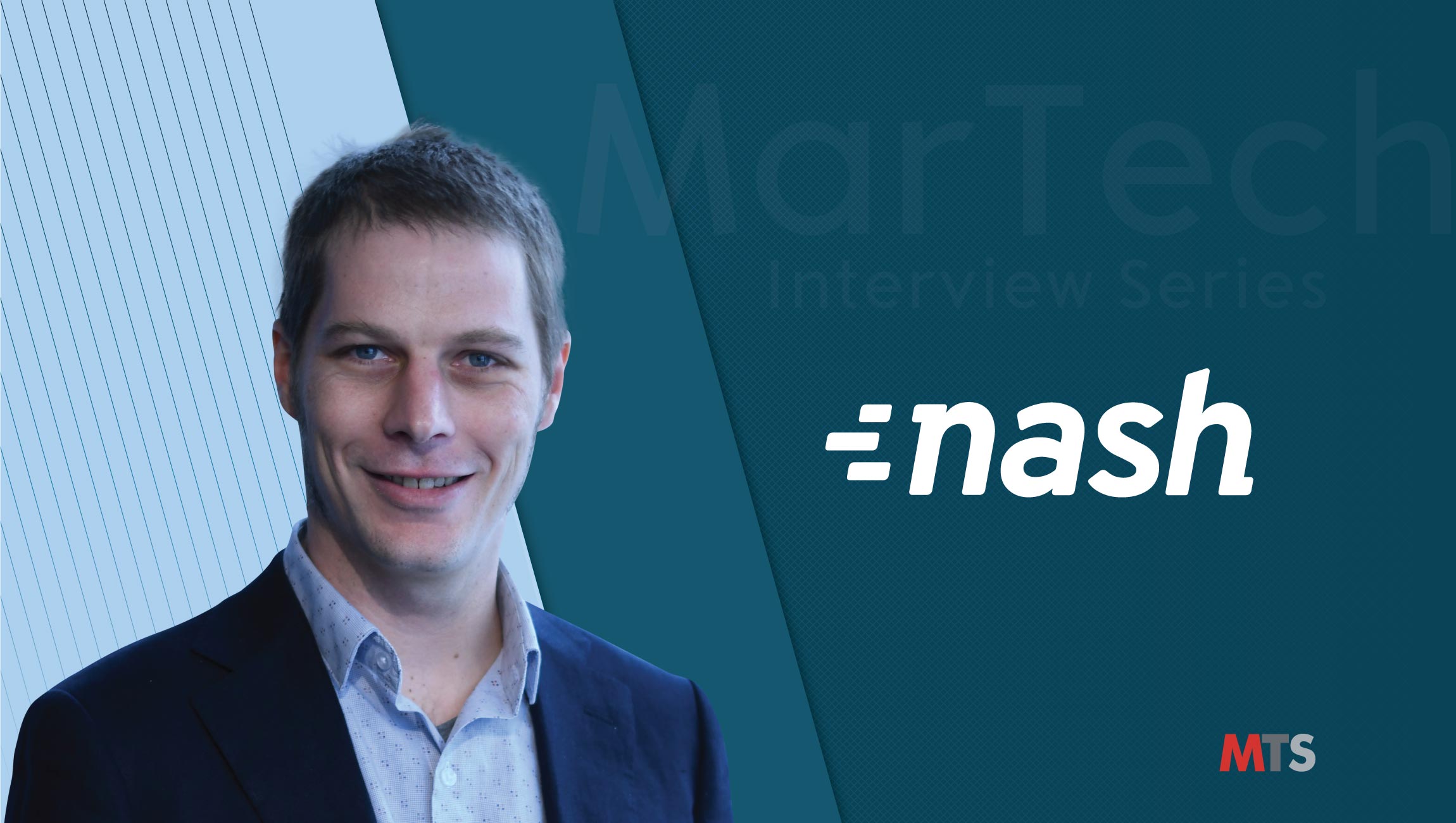Tell us about your interaction with the latest Fintech like Crypto, Ethernet and Blockchain?
I became interested in the technology behind the Ethereum Blockchain around four years ago, after which I began thinking and reading about its potential to change and shape how society approaches information, technology, and finance. For a little bit, I dabbled in mining Ethereum and Zcash and later had some fun trading crypto and investing in new projects.
Today I am mostly interested in the lower-level technology behind different types of Blockchains and how to interact with them in ways that are innovative and useful for Nash and our community.
What galvanized you to start at Nash?
Together with the other founders at Nash, I helped establish the open-source Blockchain development community, City of Zion. I discovered that our collaborations across cultures, time zones, computer languages, technical problems, and personal backgrounds were enjoyable and productive.
When Fabio Canesin asked if I’d like to join Nash, it was a very easy decision and I haven’t looked back since!
How did you begin in Programming? What are your major achievements as a Developer of neo-python and the Python compiler for NEO smart contracts?
For as long as I can remember, I’ve always been a tinkerer – whether with small electronics or cars or woodworking, or even language. I was the kid that took something apart and tried to put it back together in a different way. At University, I studied Philosophy, where I found its foundation in logic translated well to tinkering with computers and code. After graduation, I realized there was no job market for Philosophers, so I found work doing Software Engineering and have been playing with code ever since.
When I first discovered the NEO Blockchain, it required a Windows machine in order to interact with it. My main goal with neo-python and the Python compiler for smart contracts was to generate a toolset to enable developers on OSX or Linux to interact with and develop on the NEO blockchain. That goal has largely been met. Today, I use both tools almost daily for our smart contract development and testing at Nash.
Which technologies and tools you currently leverage in your role? What’s the composition of your Engineering team at Nash?
Nash uses Elixir as the software stack behind our matching engine and API services because of its fault tolerance and ability to scale across machines so well. For data storage, we use whichever tool works best for our speed and reliability needs, whether it be PostgreSQL, in-memory storage or even file-based data storage. We use Kafka as a message broker between our services and make heavy use of Docker and Terraform for our CI/CD needs. Our frontend is all done in TypeScript and leverages the React framework for our web and mobile interfaces. I use Python heavily for interacting and testing our API services, as well as for prototyping new features and projects.
Our teams are composed of groups of Developers capable of delivering features as a unit. A feature team might have two backend Developers, one frontend Engineer, one QA Engineer, and a technical Project Lead. This approach helps us avoid technical silos and keeps each person close to the feature they are developing. Each team is formed as features are needed and members move on to the next problem once a feature is complete.
What is the product roadmap for Blockchain, AI and Machine Learning at Nash? How do you leverage Data science in your PDLC operations?
Our next Blockchain-related products at Nash are decentralized Bitcoin trading and second-generation wallets that use MPC (multi-party computation) to secure user funds and allow more complex authentication patterns.
AI and ML are currently in use for identity verification, and we will be developing AI/ML for fraud detection in our payment offering. We are also currently working on trading routines based on existing ML work in the field and are in the prototype phase of using AI/ML to optimize our users’ engagement with the platform.
What is the state of Blockchain in 2019 for tech industry? How much has it evolved since the time you first started here?
Where previous years have been more forward-looking in terms of innovative ideas and initiatives, 2019 has centered on translating ideas into value for users and a larger audience via technical, legal and structural execution.
Where do you see AI/Machine learning and other smart technologies heading beyond 2020?
AI/ML will continue to be used more and more in everyday Social, Finance, Commerce, Health and Government applications. As technology becomes more accessible, it will be easier to use for smaller firms and researchers in developing solutions to business and scientific problems.
The Good, Bad and Ugly about Blockchain that you have heard or predict –
My “good” prediction is that, as Blockchain becomes more prevalent, it will continue to enable people around the world to exchange value freely and easily without expensive or invasive intermediaries or relying on fiat currencies managed by governments.
My “bad” prediction is that, as currently implemented, most finance on blockchain involves third parties that are essentially acting as the intermediaries that the dream of blockchain is trying to avoid – and this may continue for a while.
My “ugly” prediction is that blockchains, as currently implemented, will have trouble scaling to meet the transactional needs of a larger user base.
What is your opinion on “Weaponization of AI/ML”? How do you promote your ideas?
Other than in the contexts of Medicine and Art, AI/ML doesn’t really interest me and frankly scares me. Facial and other types of pattern recognition are being used by governments around the world to identify those they disagree with and preemptively subvert them.
Without a strong grounding in ethics, this is a powerful tool that is ripe for abuse by governments and businesses – and ethics often seem to be lacking these days.
The Crystal Gaze
What Cloud Analytics and SaaS start-ups and labs are you keenly following?
Nash occupies all my attention at the moment.
As a tech leader, what industries you think would be fastest to adopting Analytics and AI/ML with smooth efficiency? What are the new emerging markets for these technology markets?
Industries with access to large datasets can easily adopt analytics and AI/ML. It seems to be in use already in the industries that are most suited to it.
What’s your smartest work-related shortcut or productivity hack?
Taking a nap really helps clear the mind and lets you start on a problem with a fresh set of ideas.
Thank you, Thomas! That was fun and hope to see you back on MarTech Series soon.
Philosophy student by training and software developer of over ten years by trade, Thomas Saunders is fascinated by technologies that question the assumptions of how we interact with the world and each other.
He is the original developer of neo-python and the Python compiler for NEO smart contracts and contributes to the NEO Core project. In his role as Chief Engineering Officer at Nash, Thomas leads efforts in integrating blockchains with off-chain systems.
Nash is a fintech company using blockchain as infrastructure for the digital finance space. Our products form an integrated financial services platform that is fully non-custodial. Users can invest in, trade and make payments with digital assets and at no point will Nash control their funds. Our main product is a non-custodial digital asset exchange that competes with the speed and functionality of centralized services. Connected to this are funds management tools and a payment platform that uses our exchange to convert currencies. By combining revolutionary technology with simple, intuitive interfaces, Nash aims to make decentralized finance accessible to everyone.
The MTS Martech Interview Series is a fun Q&A style chat which we really enjoy doing with martech leaders. With inspiration from Lifehacker’s How I work interviews, the MarTech Series Interviews follows a two part format On Marketing Technology, and This Is How I Work. The format was chosen because when we decided to start an interview series with the biggest and brightest minds in martech – we wanted to get insight into two areas … one – their ideas on marketing tech and two – insights into the philosophy and methods that make these leaders tick.












